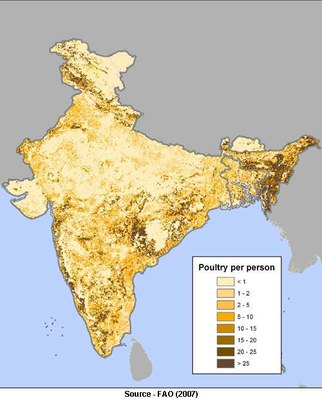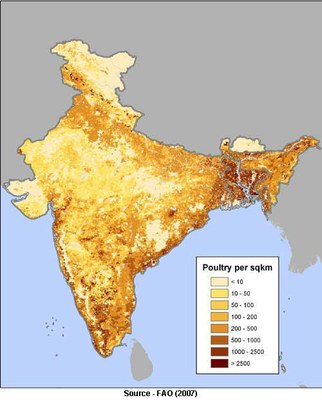Smallholder Poultry Rearing
Smallholder or backyard poultry rearing is a key livelihood activity for a large number of rural households in South Asia. In addition to small (but sustained) income, small poultry flocks reared by rural households contribute significantly to household food and nutrition security.
 Since 2006, SA PPLPP has documented a range of approaches and field interventions from Bangladesh, Bhutan and India on smallholder poultry rearing. These include interventions that have facilitated access to inputs, health services and vaccination support for smallholder poultry rearers, the formation of collectives of smallholders, and ethno-veterinary practices to strengthen smallholder poultry rearing.
Since 2006, SA PPLPP has documented a range of approaches and field interventions from Bangladesh, Bhutan and India on smallholder poultry rearing. These include interventions that have facilitated access to inputs, health services and vaccination support for smallholder poultry rearers, the formation of collectives of smallholders, and ethno-veterinary practices to strengthen smallholder poultry rearing.
An analysis of the data collected in the process of documenting these approaches and field interventions, demonstrates that small but targeted interventions in strengthening smallholder and backyard poultry production systems provide handsome returns (up to over 200 per cent per year) both in terms of monetary income and an improved availability of animal food.
These results are due to a combination of  interventions that ensure: (i) a regular supply of birds, which can be supported through a smallholder‐based supply chain; (ii) access to reliable veterinary supplies and animal health services, which can be efficiently provided by community based animal health workers, when appropriately selected, trained and supported by animal health assistants/veterinarians; (iii) access to adequate feed resources, with commercially oriented, small‐scale farmers willing to pay for balanced feed rations for their birds; (iv) availability of basic infrastructure, primarily housing for birds and (v) access to reliable markets for live birds, poultry meat or eggs, which is particularly relevant for market-oriented, small-scale poultry producers.
interventions that ensure: (i) a regular supply of birds, which can be supported through a smallholder‐based supply chain; (ii) access to reliable veterinary supplies and animal health services, which can be efficiently provided by community based animal health workers, when appropriately selected, trained and supported by animal health assistants/veterinarians; (iii) access to adequate feed resources, with commercially oriented, small‐scale farmers willing to pay for balanced feed rations for their birds; (iv) availability of basic infrastructure, primarily housing for birds and (v) access to reliable markets for live birds, poultry meat or eggs, which is particularly relevant for market-oriented, small-scale poultry producers.
References
- Jensen H. A. and F. Dolberg (2003) A Conceptual Tool for Using Poultry as a Tool in Poverty Alleviation. Revised version. Paper delivered at the International Conference on Staying Poor; Chronic Poverty and Development Policy, IDPM, University of Manchester and Dolberg F. (2009) Poultry Sector Country Review: Bangladesh. FAO, Rome.
- Royal Government of Bhutan (2004) Renewable Natural Resources (RNR) Statistics: National Key Figures. Planning and Policy Division, Ministry of Agriculture, Thimphu, Royal Government of Bhutan (2006) Livestock Statistics 2006. Department of Livestock, Ministry of Agriculture. Thimphu and Narapati D. (2007) Prevalence of Antimicrobial Resistance of Salmonella in Imported Chicken Carcasses in Bhutan. MA Thesis, Chiang Mai University, Chiang Mai, and Freie Universität, Berlin.
- Government of India (2006a) Livestock Ownership across Operational Land Holding Classes in India, 2002–2003. NSS 59th Round, Report No. 493 (59/18.1/1), Government of India, New Delhi.









